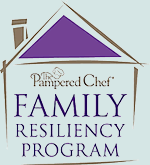
OverviewThe majority of Americans increasingly find themselves called upon to manage out-of-the-home work and the needs of personal and family life. Recent studies have reported that most people work more hours than they would prefer to (Clarksberg & Moen, 2001), and one third of American workers chronically feel overworked (Galinsky, Kim, & Bond, 2001). Work-life stress can have serious effects on emotional and physical well-being (Davidson & Fielden, 1999) and on relationships with family members (Perry-Jenkins, Repetti, & Crouter, 2000). At work, stress leads to increased dissatisfaction and absenteeism, low productivity, conflict with co-workers, worker turnover, and higher health insurance costs (Schafer, 1987). Although commercial work-life balance materials and programs exist, these can be costly, are often not research-based, and frequently address only small parts of the problem. University of Illinois Extension staff has developed a new research-based program to help people manage their work and their personal lives called Intentional Harmony: Managing Work and Life. In contrast to many work-life balance interventions, Intentional Harmony is firmly based in family theory and interdisciplinary research, and it addresses the needs of working individuals systematically. The Intentional Harmony: Managing Work and Life curriculum is organized into 5 major domains. (“Work and the Individual” is divided into 2 subsections as shown below). Materials for each domain include a facilitator’s guide and activities, a PowerPoint (slides) workshop presentation, handouts, and a research review. The five domains are shown below, with handouts listed. Intended AudiencesIntentional Harmony is designed to meet the needs of individuals (single or coupled, parents or not) who are employed and who struggle to create harmony in the contexts of work and personal life. The curriculum has a flexible, dynamic format. It can be used as a series of up to 6 workshops (in the range of 1-2 hours in length) corresponding to the units described below. Materials can be tailored to address specific concerns and particular audiences. The facilitator manuals make specific suggestions for tailoring and there are handouts suited to various kinds of audiences. In general, it is suitable for professional and management ranks as well as blue-collar employees. We have consciously aimed the material at men and women by weaving some of their specific concerns throughout. While there is very little research on ethnic differences in precursors of, responses to, and strategies for easing work stress, the curriculum aims to reflect the diversity of the American population. Where we are aware of relevant research, we have integrated it into the materials, and examples and illustrations are consciously diverse. Because past interventions have almost exclusively been aimed at heterosexual audiences, we have included a research review and two handouts on work stress for gays and lesbians. Intentional Harmony can be delivered to traditional family life audiences. Beyond this, it is especially suitable for delivery/implementation in workplaces where employers care about the well being of their employees. As an example, workshops could be delivered as part of a lunchtime wellness series. The curriculum was created such that it can be effectively delivered by professionals not specifically trained in family life education or social sciences, such as those in human resources and other similar fields. Ideally, employers will obtain the curriculum and have their internal staff trained to deliver it at regular intervals, to current employees as well as new hires. Curriculum Outline
Internet ConnectionThe entire curriculum is supported by a website for facilitators and participants. (Facilitators and participants have access to different parts of the site as appropriate). This site provides downloadable handouts, additional resources and links, and commentaries on current events and media stories relevant to work-life stress. The curricular materials will be updated periodically via this website. EvaluationEvaluation instruments will be provided as part of the curriculum training so that facilitators can test the effectiveness of their interventions. We completed one evaluation study of the "Managing Work and Children" unit. The study is under review, and the analyses clearly show that parents report better work-life management in the parenting domain four weeks after the workshop. We the other units are being tested, and we will report general results on the curriculum website. Additionally, we will submit more papers to professional journals reporting on the effectiveness of the program. On-going evaluations will also allow us to refine the curriculum based on what we learn. ©
2004 Board of Trustees, University of Illinois
|

